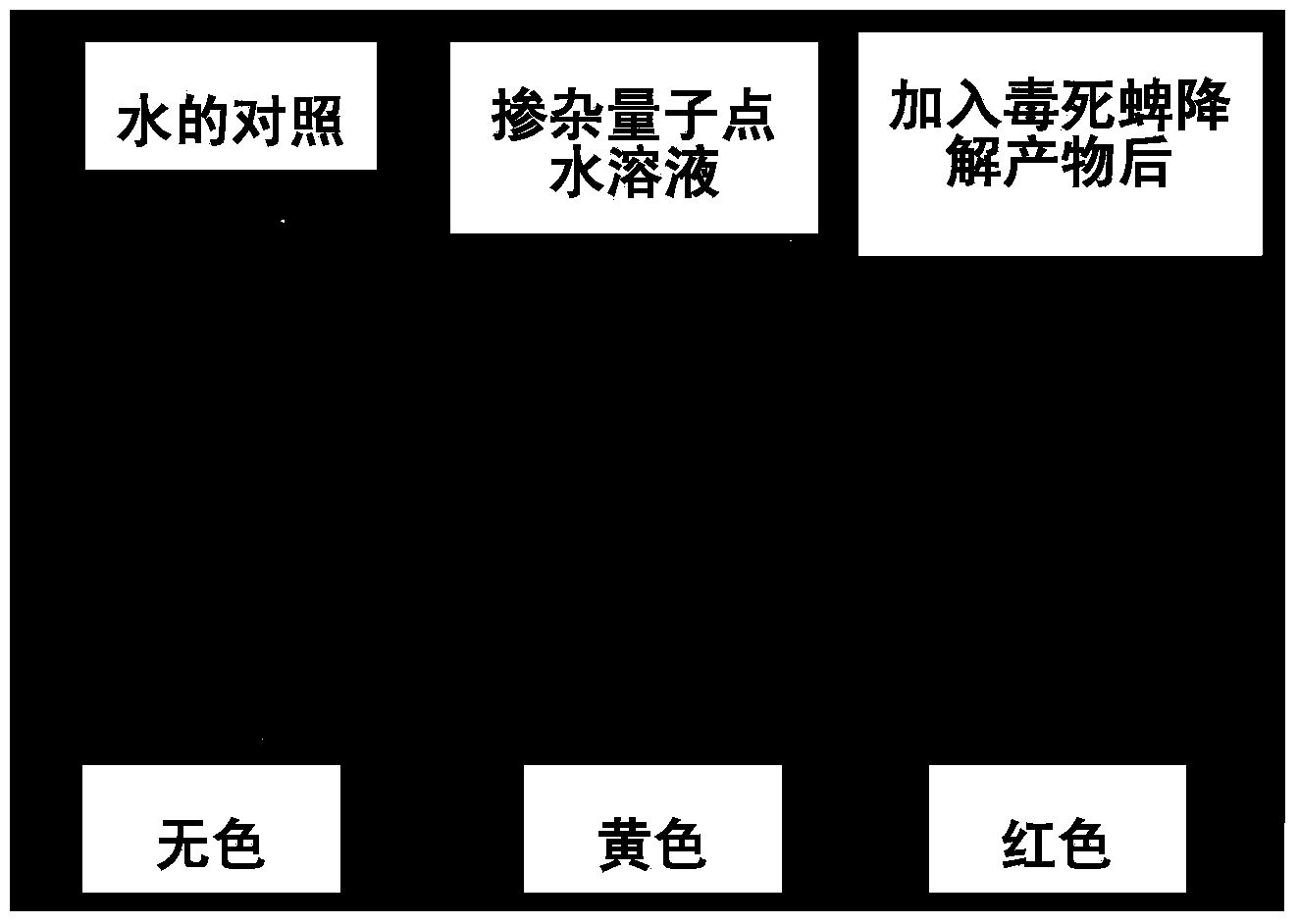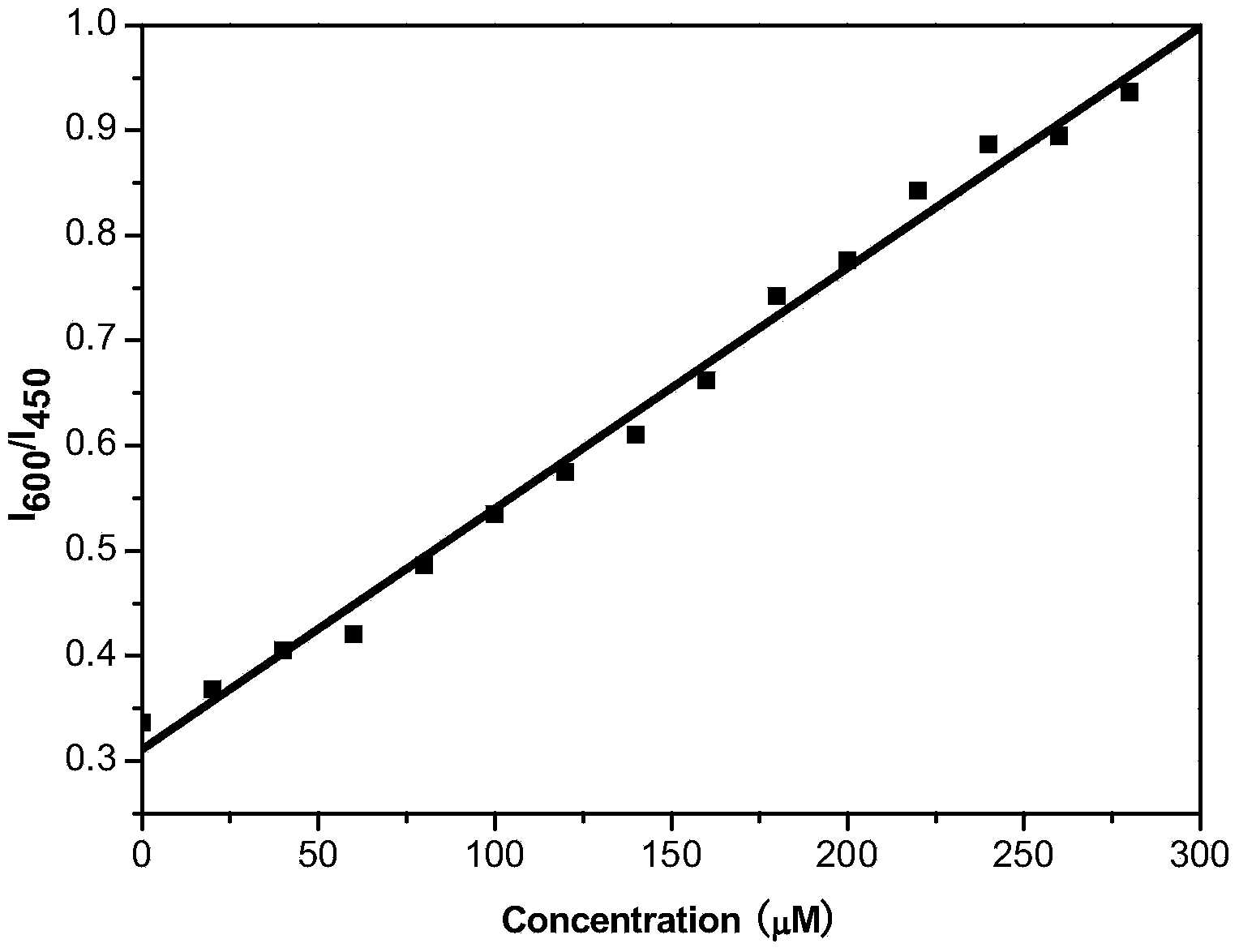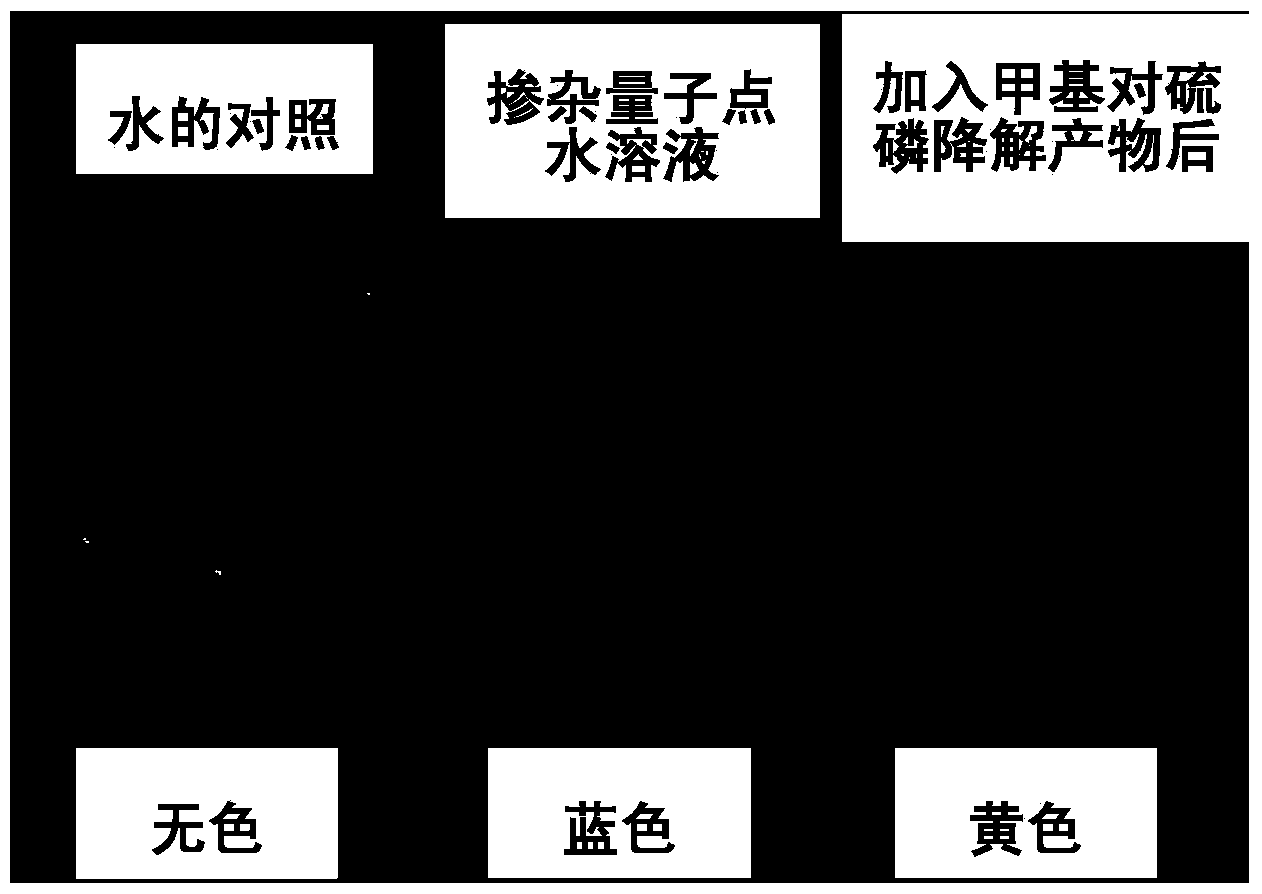Method for visualized detection of organophosphorus pesticide residue by doped quantum dot ratio fluorescence technique
An organophosphorus pesticide and ratio fluorescence technology, applied in the field of agrochemical analysis, can solve the problems of inability to distinguish between organophosphorus and carbamate pesticides, expensive instruments, difficult on-site detection, etc. Simple operation, avoid interference effect
- Summary
- Abstract
- Description
- Claims
- Application Information
AI Technical Summary
Problems solved by technology
Method used
Image
Examples
Embodiment 1
[0034] Example 1: Detection of chlorpyrifos and its degradation products
[0035] 1. Preparation of manganese-doped zinc sulfide quantum dots
[0036] First dissolve 50mmol of zinc nitrate in 40mL of deionized water, then take 0.5-7.5mmol of manganese acetate and dissolve it in the above solution to do a series of manganese doping experiments to determine which amount has the highest luminescence yield. Ultrasonic the above mixture for 10 minutes Dissolve completely, then reflux and pass through dry nitrogen for more than 30min to remove oxygen in the solution. Dissolve 50mmol of sodium sulfide in 10mL of deionized water, add dropwise to the above boiling mixture, reflux and vigorously stir for 5h. After cooling, centrifuge, ultrasonically disperse and wash three times with deionized water before redispersing in water. Fluorescence spectrum see figure 1 .
[0037] 2. Quenching of fluorescence with double emission bands of doped quantum dots
[0038] Take 5 mL of manganese...
Embodiment 2
[0043] The detection of embodiment 2 methyl parathion
[0044] 1. Preparation of copper and manganese co-doped zinc sulfide quantum dots
[0045] First dissolve 50mmol of zinc chloride in 40mL of deionized water, then take 0.5-7.5mmol of manganese chloride and copper chloride to dissolve in the above solution and do a series of manganese-involving experiments to determine which amount has the highest luminescence yield. The above mixture was sonicated for 10 minutes to dissolve completely, and then refluxed with dry nitrogen for more than 30 minutes to remove the oxygen in the solution. Dissolve 50mmol of sodium sulfide in 10mL of deionized water, add dropwise to the above boiling mixture, reflux and vigorously stir for 5h. After cooling, centrifuge, ultrasonically disperse and wash three times with deionized water, then redisperse in water (concentration micrograms per milliliter), and set aside.
[0046] 2. Quenching of fluorescence with double emission bands of doped quan...
PUM
 Login to View More
Login to View More Abstract
Description
Claims
Application Information
 Login to View More
Login to View More - R&D
- Intellectual Property
- Life Sciences
- Materials
- Tech Scout
- Unparalleled Data Quality
- Higher Quality Content
- 60% Fewer Hallucinations
Browse by: Latest US Patents, China's latest patents, Technical Efficacy Thesaurus, Application Domain, Technology Topic, Popular Technical Reports.
© 2025 PatSnap. All rights reserved.Legal|Privacy policy|Modern Slavery Act Transparency Statement|Sitemap|About US| Contact US: help@patsnap.com



